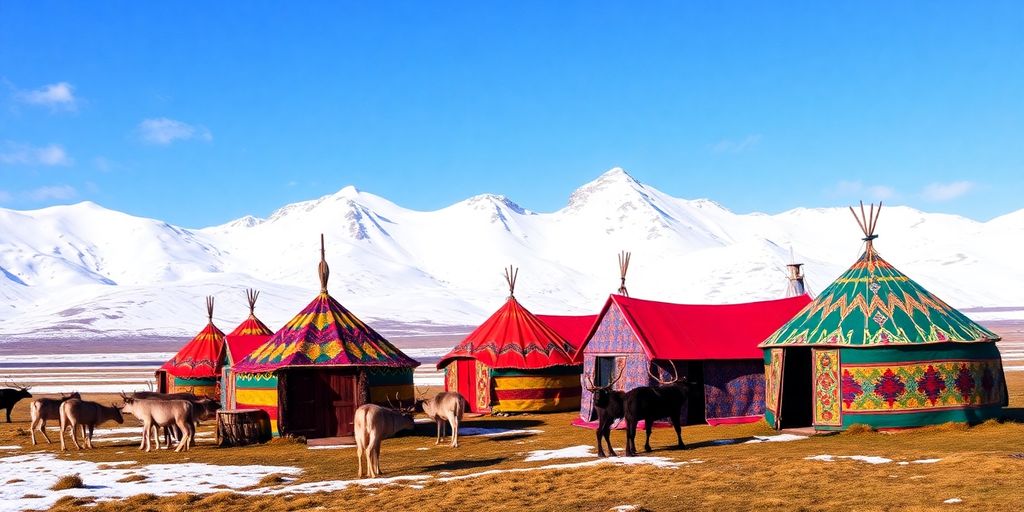Why March is the Real New Year!
March might just be the real start of the year if you think about it. While January 1st is widely celebrated as New Year’s Day, history and nature suggest otherwise. Many ancient cultures, including the Romans and Babylonians, kicked off their year in March, aligning with the arrival of spring. This month is all about new beginnings, as the earth wakes up from its winter slumber and bursts into life. So, let’s explore why March, not January, might be the true beginning of the year.
Key Takeaways
- Historically, March was the start of the year for ancient Romans and Babylonians.
- Cultural celebrations like Nowruz and Ostara mark March as a time of renewal.
- The March equinox brings equal daylight, symbolizing balance and new beginnings.
- Nature’s revival in March inspires themes of rebirth and fresh starts.
- January became the official New Year due to Roman politics and the Gregorian calendar.
The Historical Roots of March as the New Year

Ancient Roman Calendar and March Beginnings
Back in the day, the early Roman calendar kicked off in March. This was before January and February even existed. The Romans had a 10-month calendar that started with Martius, named after Mars, the god of war. This calendar was all about agriculture and religious rituals, running from March to December. The winter months? They didn’t even bother naming them at first. Over time, as the Romans got more into astronomy and politics, they added January and February, eventually shifting the new year to January.
Babylonian Traditions and Spring Festivals
The Babylonians were celebrating the new year way back in 2000 BC. They had a lunisolar calendar, and their new year, called Akitu, was in Nisan, right around the March equinox. This festival was a big deal, with rituals that lasted 11 days, symbolizing the renewal of the earth. It was all about marking the start of spring, a time for planting and new beginnings.
Evolution of the Gregorian Calendar
The calendar we use today, the Gregorian calendar, evolved from these ancient systems. It was introduced by Pope Gregory XIII in 1582 to correct the Julian calendar’s inaccuracies. The Julian calendar, which had been in use since 45 BC, miscalculated the solar year by 11 minutes. Over centuries, this added up, messing with the timing of equinoxes and religious holidays. The Gregorian reform fixed this by adjusting the leap year system, aligning our calendar more closely with the solar year. This change solidified January 1st as the start of the new year, but the echoes of March as the beginning linger in history.
Cultural Celebrations Marking March as the New Year
Ostara and the Spring Equinox
Ostara is a celebration that coincides with the spring equinox, marking a time when day and night are of equal length. This period is often seen as a moment of balance and renewal. Many cultures have embraced this time for festivals and rituals that honor the awakening of nature. It’s a time when people start fresh, aligning themselves with the rebirth occurring in the natural world. Celebrations often include planting seeds, decorating eggs, and enjoying the first blooms of spring.
Nowruz: A Celebration of Renewal
Nowruz, celebrated by millions across the globe, is rooted in ancient Persian traditions. This festival not only marks the beginning of the new year but also the arrival of spring. It embodies themes of renewal and rejuvenation, with customs like cleaning homes, visiting family, and preparing special meals. Symbolically, Nowruz represents the triumph of light over darkness and the promise of new beginnings.
The Wheel of the Year and Neopagan Traditions
Neopagan traditions, such as those observed by Wiccans, recognize the Wheel of the Year, which includes festivals like Ostara. These celebrations are deeply connected to the cycles of nature and the changing seasons. In March, the focus is on growth and fertility, with rituals that aim to harness the energy of the earth as it awakens from winter’s slumber. This time is seen as an opportunity to plant intentions and embrace the new life surrounding us.
March, with its equinox and vibrant cultural celebrations, serves as a powerful reminder of the cycles of life and the enduring human connection to the rhythms of nature.
Astronomical Significance of March
The March Equinox and Equal Daylight
March is a time of balance, and nothing illustrates this better than the March equinox. This event, happening around March 20th, marks a point where day and night are nearly equal in length. It’s a moment when the sun crosses the celestial equator, moving northward in the sky. This equinox is crucial for astronomical calculations as it sets the zero point of sidereal time, affecting right ascension and ecliptic longitude. It’s a celestial signal for the onset of spring in the Northern Hemisphere and autumn in the Southern Hemisphere.
Zodiac Beginnings with Aries
The Zodiac calendar kicks off with Aries in March. Aries, the first sign, symbolizes new beginnings and energy. When the sun enters Aries, it marks the start of the astrological year. This transition brings a burst of vitality and enthusiasm, encouraging people to take on new challenges and projects. Aries is often associated with traits like courage, determination, and a pioneering spirit.
The Celestial Influence on Calendars
Calendars have long been influenced by celestial events. The March equinox, for example, plays a significant role in how we perceive time and seasons. Many ancient cultures, including the Babylonians and Romans, aligned their calendars with celestial events like equinoxes and solstices. This alignment helped them track agricultural cycles and religious festivals. The equinoxes, in particular, were seen as times of balance and transition, symbolizing the shift from one season to another.
March, with its equinox, is not just a change in weather but a shift in cosmic balance, offering a fresh start and a chance to realign with nature’s rhythms.
March as a Time of Renewal and Rebirth

Spring’s Symbolism in Various Cultures
March is often seen as a month of transformation and new beginnings. Across different cultures, spring is celebrated as a time when the earth awakens from its winter slumber. In many traditions, this month is linked to fertility and growth. As the days grow longer and warmer, people feel a renewed sense of energy and purpose. Spring’s arrival is like a universal signal for life to start anew. Whether through festivals or personal reflection, March encourages us to embrace change and welcome new opportunities.
The Energy and Intention of Spring
There’s something about spring that just feels different. Maybe it’s the longer days or the warmer weather, but March seems to bring a burst of energy. People often find themselves motivated to start new projects or set fresh goals. The season is all about intention—deciding what you want to achieve and taking steps to get there. It’s a time to clear out the old, whether that’s clutter in your home or outdated habits, and make room for the new. Many people use this time to reflect on their personal growth and set intentions for the months ahead.
- Cleaning out your living space to remove clutter
- Setting new personal or professional goals
- Engaging in outdoor activities to reconnect with nature
Nature’s Renewal and Human Connection
Nature itself is a powerful symbol of renewal. As plants start to bloom and animals come out of hibernation, the natural world reminds us of the cycles of life and the importance of renewal. For humans, this is a chance to reconnect with the earth and find inspiration in its beauty. Spending time outdoors can be incredibly grounding, helping us to feel more connected to the world around us. This connection is not just physical; it’s emotional and spiritual too. As we witness nature’s renewal, we are reminded of our own capacity for growth and change.
Embracing the arrival of spring is about more than just enjoying the warmer weather. It’s about recognizing the potential for growth within ourselves and taking steps to nurture that potential.
March, with its promise of new beginnings, invites us to reflect on our own lives and consider how we can grow and evolve. As nature renews itself, we too can find ways to refresh our minds, bodies, and spirits.
Why January Became the Official New Year
The Role of Janus in Roman Mythology
In ancient Rome, January was named after Janus, the god of beginnings, transitions, and gateways. This two-faced deity, who could look both forward and backward, symbolized change and was a fitting patron for the start of a new year. January 1st became a time to honor Janus and reflect on the past while anticipating the future. This tradition of marking the year’s start in January was deeply rooted in Roman culture, aligning with their beliefs in new beginnings.
Political and Religious Influences
The shift to January as the official start of the year was not just about mythology; it was also driven by political and religious changes. In 153 BC, the Roman Senate declared January 1st as the beginning of the new year to coincide with the inauguration of new consuls. This political decision established a clear, consistent calendar that aligned with Rome’s administrative needs. Additionally, as Christianity spread, January 1st gained religious significance, eventually being recognized as the Feast of the Circumcision of Christ by the Christian Church.
The Global Shift to the Gregorian Calendar
The adoption of the Gregorian calendar in 1582 by Pope Gregory XIII standardized January 1st as New Year’s Day across much of the world. This reform was aimed at correcting the inaccuracies of the Julian calendar, particularly concerning the calculation of Easter. The Gregorian calendar’s introduction marked a global shift in how time was measured and celebrated. Over time, most countries embraced this calendar system, solidifying January 1st as the start of the new year. The widespread acceptance of the Gregorian calendar helped unify different cultures under a common temporal framework, making January 1st a universal celebration.
Modern Movements Embracing March as the New Year
Cultural Shifts and Modern Celebrations
In recent years, there’s been a noticeable shift towards celebrating March as the true start of the year. This isn’t just about nostalgia for ancient calendars—it’s about aligning with nature’s cycles. Many people feel that the burst of life in spring is a more fitting time to start anew than the cold, dark days of January. March, with its vibrant energy, seems to naturally encourage fresh beginnings.
The Rise of Alternative Calendars
Alternative calendars are popping up, offering different ways to mark time. These calendars often sync with lunar cycles or seasonal changes, making March a focal point. Some folks prefer these systems because they feel more connected to natural rhythms.
Here’s a quick look at some alternative calendars:
- Lunar Calendar: Aligns months with moon phases.
- Solar Calendar: Focuses on the sun’s position, marking solstices and equinoxes.
- Seasonal Calendar: Divides the year into seasons, with March as the start of spring.
Personal Reflections on a Springtime New Year
For many, March feels like a time of renewal. People often reflect on their goals and aspirations as the world around them comes to life. It’s a chance to reset, both personally and spiritually.
Embracing a new year in March isn’t just about the date; it’s about the feeling of possibility that comes with spring’s arrival. The air is fresh, the days are longer, and there’s a sense of hope that seems to blossom with the flowers.
In conclusion, while January marks the official start of the year on the Gregorian calendar, March is gaining popularity as a time for personal renewal and celebration. Whether through cultural shifts, alternative calendars, or personal reflection, many are finding March to be the real beginning of their year.
Wrapping It Up: March as the New Year
So, there you have it. March, with its burst of life and energy, might just be the perfect time to hit the reset button. While January has its place in the calendar, March brings a natural sense of renewal. The days get longer, flowers start to bloom, and there’s this feeling in the air that anything’s possible. It’s like nature’s way of saying, "Hey, let’s start fresh." Whether you’re into ancient traditions or just looking for a reason to celebrate, March offers a unique chance to embrace new beginnings. So why not give it a shot? You might find that starting your year in March feels just right.
Frequently Asked Questions
Why did March use to be the start of the new year?
In ancient times, March was considered the beginning of the year because it marked the start of the spring season, a time of renewal and growth. The Romans originally had a calendar that began in March.
What are some cultural celebrations in March?
March is celebrated with various cultural events like Nowruz, the Persian New Year, and Ostara, a festival marking the spring equinox in neopagan traditions.
How does the March equinox affect day and night?
During the March equinox, day and night are approximately equal in length. This happens because the sun crosses the celestial equator.
Why was January chosen as the new start of the year?
January became the start of the new year when the Gregorian calendar was adopted. It was named after Janus, the Roman god of beginnings, symbolizing a time to look back and forward.
What is the significance of Aries in March?
Aries is the first sign of the zodiac, and its season begins in March. It symbolizes new beginnings and is associated with energy and enthusiasm.
Are there modern movements that celebrate March as the new year?
Yes, some modern movements and individuals choose to celebrate the new year in March, aligning with natural cycles and the idea of spring as a time for fresh starts.








Responses